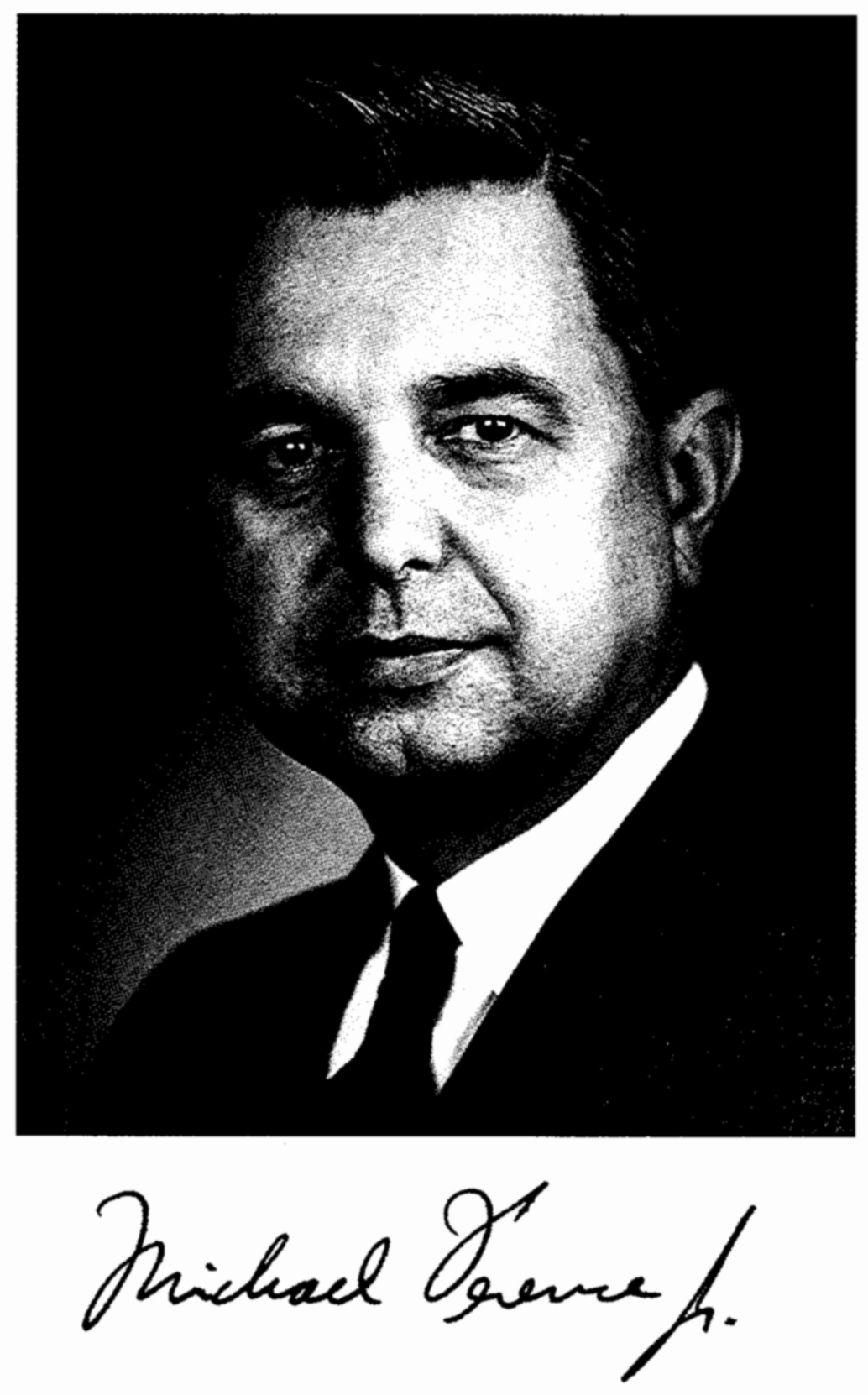Page 71
RICHARD W. ENGELBRECHT
1927–1996
BY WILLIAM J. HALL AND VERNON L. SNOEYINK
DICK ENGELBRECHT was a pioneer in the field of environmental pollution control, particularly the development of solutions to microbiological problems associated with water quality management, including drinking water and wastewater treatment. He was an “institution” nationally as well as internationally, and in the National Research Council he was known as “Mr. Water.”
Dick Engelbrecht was born on March 11, 1926, in Ft. Wayne, Indiana, and died on September 1, 1996, in Urbana, Illinois. He received an A.B. degree in zoology from Indiana University-Bloomington in 1948, after which he pursued graduate studies in microbiology and biochemistry at the same institution. Subsequently he received M.S. and Sc.D. degrees in sanitary science from the Massachusetts Institute of Technology in 1952 and 1954, respectively. Among the many professional organizations in which he was active were the American Association for the Advancement of Science; the American Society for Microbiology; the American Water Works Association (chairman, Illinois Section, 1970, life member); the Water Environment Federation, formerly the Water Pollution Control Federation (president, 1977); and the International Association on Water Quality, formerly the International Association on Water Pollution Research and Control (president 1980-1986). Dick held numerous posts in these organizations in addition to those cited.
Page 72
Dick joined the Department of Civil Engineering at the University of Illinois in Urbana-Champaign in 1954 as an assistant professor. He held the rank of professor of environmental engineering from 1959 until he retired in 1992, when he became professor emeritus. From 1987 to 1989 he held the Ivan Racheff Professorship of Environmental Engineering, and from 1979 to 1991 he was director of the UIUC Advanced Environmental Control Technology Research Center. For a period of time in 1973, he was visiting professor at the Technion-Israel Institute of Technology, Haifa, Israel.
Dick's forte was public service. He served on numerous national and international committees, commissions, boards of governmental agencies, and professional societies. He was a member of the Ohio River Valley Water Sanitation Commission (ORSANCO) from 1976 onward, serving as chairman of the Commission from 1980 to 1982 and again from 1993 to 1994; at the time of his death he had just been appointed to another term by Illinois Governor James Edgar. He served on numerous committees, panels, and boards of the National Research Council and was a member of the Water Science and Technology Board from 1982 to 1986. He also served as a consultant to the U.S. Environmental Protection Agency, the World Health Organization (WHO), the National Science Foundation, and many other governmental and private agencies; among the latter were the American Forest and Paper Association and Kurita Water Industries, Ltd., Tokyo, Japan. His active participation in these important bodies, especially the WHO, and his associated technical contributions to public health led to many demands on his time and required much travel over the entire globe.
His contributions to the solution of societal problems led to an immense number of professional awards. Among these were the Harrison Prescott Eddy Medal for noteworthy research (1966) and the Arthur Sidney Bedell Award (1973), both from the Water Pollution Control Federation; the George W. Fuller Award (1974) and the Publication Award (1975), both from the American Water Works Association; and the Eric H. Vick Award (1979) from the Institution of Public Health Engineers (UK). Dick was elected to membership in the National Academy of
Page 73
Engineering in 1976, and to honorary membership in Abwassertechnische Vereiningung (West Germany) in 1978. In 1974 he received the Radebaugh Award, and in 1985 the George J. Schroepfer Award from the Central States Water Pollution Control Association. The Benjamin Garver Lamme Award of the American Society of Engineering Education was bestowed upon him in 1985.
In 1986 he was elected to honorary membership in the Water Environment Federation and was awarded the Gordon Maskew Fair Medal by the same organization in 1987. He was elected to honorary membership in the International Association on Water Pollution Research and Control in 1990. In 1992 he received a Certificate of Appreciation from the Japan Sewage Works Agency. Because of his long involvement with many environmental projects and his help to Japanese graduate students at the University of Illinois, he received a national decoration from the Emperor of Japan in 1993, namely the Order of the Sacred Treasure, Gold Rays with Neck Ribbon. The Association of Environmental Engineering Professors honored him in 1993 with its Founders' Award for sustained and outstanding contributions to environmental engineering education. A month before his death, he had been awarded the Warren A. Hall Medal from the Universities Council on Water Resources.
Dick was a member of Sigma Xi and was listed in Who's Who in America as well as numerous similar publications. He was the author or coauthor of more than 122 articles, proceedings, papers, and chapters in books. Like many other outstanding engineers, Dick was an early to bed and early to rise man, accomplishing much of his most creative work in the early morning hours. Consistent with this mode of operation, he frequently faded early in the evening, but at intimate social gatherings, quite often, humorously wore a large badge that read, “ I am awake, and having fun.”
Dick's death leaves a large void in the profession. He provided strong, well-directed leadership and served as a role model for others, who through similar professional services worked for the betterment of society. Dick Engelbrecht will long be remembered by his friends and associates worldwide.
Page 74
Dick was a genuine family man, seeing to it that all members of his family, including especially his daughters-in-law (whom he called his girls) and his grandchildren, received special attention at all times. He is survived by his wife, Mary; his two sons, William of Louisville, Kentucky, and Timothy of St. Louis, Missouri; and five grandchildren.







